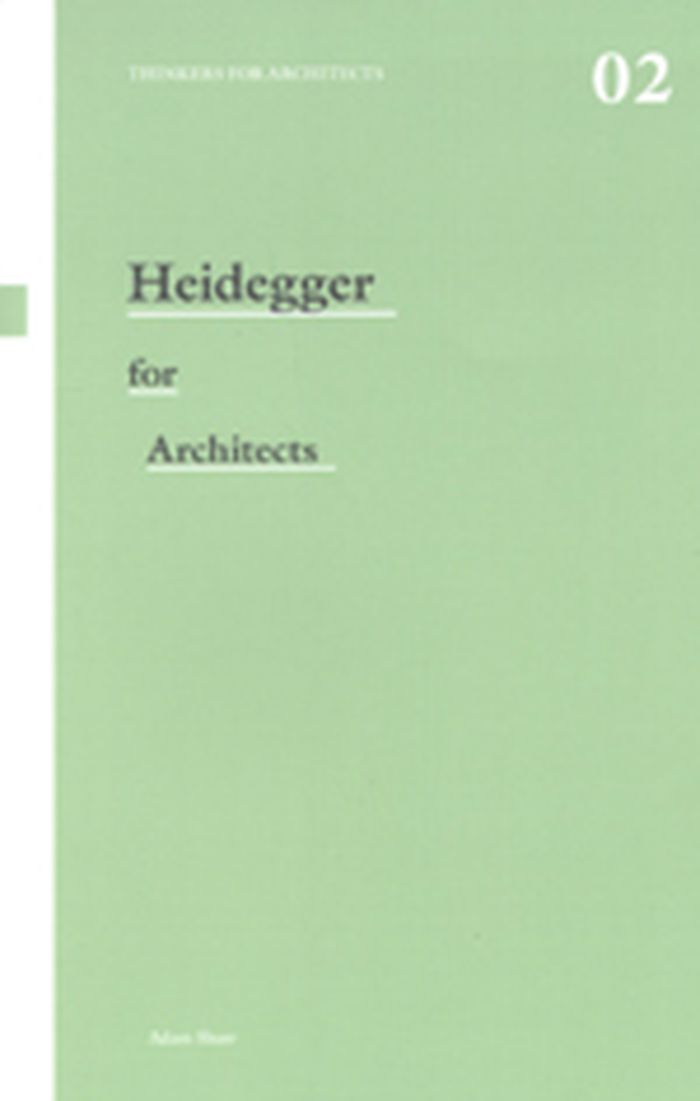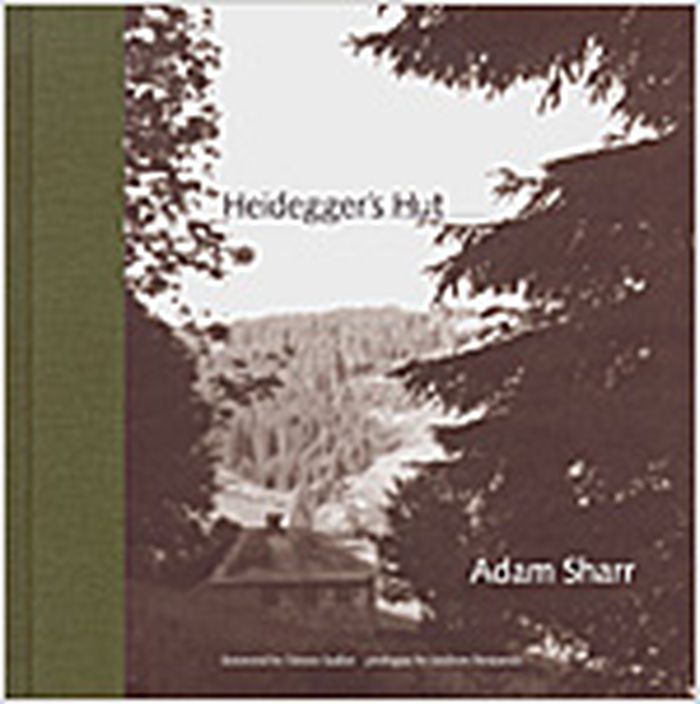Heidegger for Architects
$44.70
(disponible sur commande)
Résumé:
Informing the designs of architects as diverse as Peter Zumthor, Steven Holl, Hans Scharoun and Colin St. John Wilson, the work of Martin Heidegger has proved of great interest to architects and architectural theorists. The first introduction to Heidegger’s philosophy written specifically for architects and students of architecture introduces key themes in his(...)
Heidegger for Architects
Actions:
Prix:
$44.70
(disponible sur commande)
Résumé:
Informing the designs of architects as diverse as Peter Zumthor, Steven Holl, Hans Scharoun and Colin St. John Wilson, the work of Martin Heidegger has proved of great interest to architects and architectural theorists. The first introduction to Heidegger’s philosophy written specifically for architects and students of architecture introduces key themes in his thinking, which has proved highly influential among architects as well as architectural historians and theorists. This guide familiarizes readers with significant texts and helps to decodes terms as well as providing quick referencing for further reading. This concise introduction is ideal for students of architecture in design studio at all levels; students of architecture pursuing undergraduate and postgraduate courses in architectural theory; academics and interested architectural practitioners. Heidegger for Architects is the second book in the new Thinkers for Architects series.
Théorie de l’architecture
Heidegger's hut
$32.95
(disponible sur commande)
Résumé:
"This is the most thorough architectural 'crit' of a hut ever set down, the justification for which is that the hut was the setting in which Martin Heidegger wrote phenomenological texts that became touchstones for late-twentieth-century architectural theory." --from the foreword by Simon Sadler Beginning in the summer of 1922, philosopher Martin Heidegger(...)
Théorie de l’architecture
octobre 2006, Cambridge / London
Heidegger's hut
Actions:
Prix:
$32.95
(disponible sur commande)
Résumé:
"This is the most thorough architectural 'crit' of a hut ever set down, the justification for which is that the hut was the setting in which Martin Heidegger wrote phenomenological texts that became touchstones for late-twentieth-century architectural theory." --from the foreword by Simon Sadler Beginning in the summer of 1922, philosopher Martin Heidegger (1889-1976) occupied a small, three-room cabin in the Black Forest Mountains of southern Germany. He called it "die Hütte" ("the hut"). Over the years, Heidegger worked on many of his most famous writings in this cabin, from his early lectures to his last enigmatic texts. He claimed an intellectual and emotional intimacy with the building and its surroundings, and even suggested that the landscape expressed itself through him, almost without agency. In Heidegger's Hut, Adam Sharr explores this intense relationship of thought, place, and person. Heidegger's mountain hut has been an object of fascination for many, including architects interested in his writings about "dwelling" and "place." Sharr's account--the first substantive investigation of the building and Heidegger's life there--reminds us that, in approaching Heidegger's writings, it is important to consider the circumstances in which the philosopher, as he himself said, felt "transported" into the work's "own rhythm." Indeed, Heidegger's apparent abdication of agency and tendency toward romanticism seem especially significant in light of his troubling involvement with the Nazi regime in the early 1930s. Sharr draws on original research, including interviews with Heidegger's relatives, as well as on written accounts of the hut by Heidegger and his visitors. The book's evocative photographs include scenic and architectural views taken by the author and many remarkable images of a septuagenarian Heidegger in the hut taken by the photojournalist Digne Meller-Markovicz. There are many ways to interpret Heidegger's hut--as the site of heroic confrontation between philosopher and existence; as the petit bourgeois escape of a misguided romantic; as a place overshadowed by fascism; or as an entirely unremarkable little building. Heidegger's Hut does not argue for any one reading, but guides readers toward their own possible interpretations of the importance of "die Hütte."
Théorie de l’architecture
$62.50
(disponible sur commande)
Résumé:
Formerly grounded in values of craftsmanship, in the skilled making of products, ‘quality’ is now associated with the management of administrative or technical processes. Its appreciation, once based in the exercise of individual judgement and taste, is now often founded on supposedly objective systems of evaluation. Practitioners of design are under pressure to(...)
Théorie de l’architecture
janvier 2010
Quality out of control: standards for measuring architecture
Actions:
Prix:
$62.50
(disponible sur commande)
Résumé:
Formerly grounded in values of craftsmanship, in the skilled making of products, ‘quality’ is now associated with the management of administrative or technical processes. Its appreciation, once based in the exercise of individual judgement and taste, is now often founded on supposedly objective systems of evaluation. Practitioners of design are under pressure to quantify ‘quality’, but it is questionable whether it is possible or even desirable to do so. This book considers this important issue, looking at how quality is defined,appreciated, evaluated, managed, and produced. With contributions from eminent architects and architectural critics, this book is for architects, academics, students and anyone interested in what architectural quality is, and how it may be achieved.
Théorie de l’architecture


